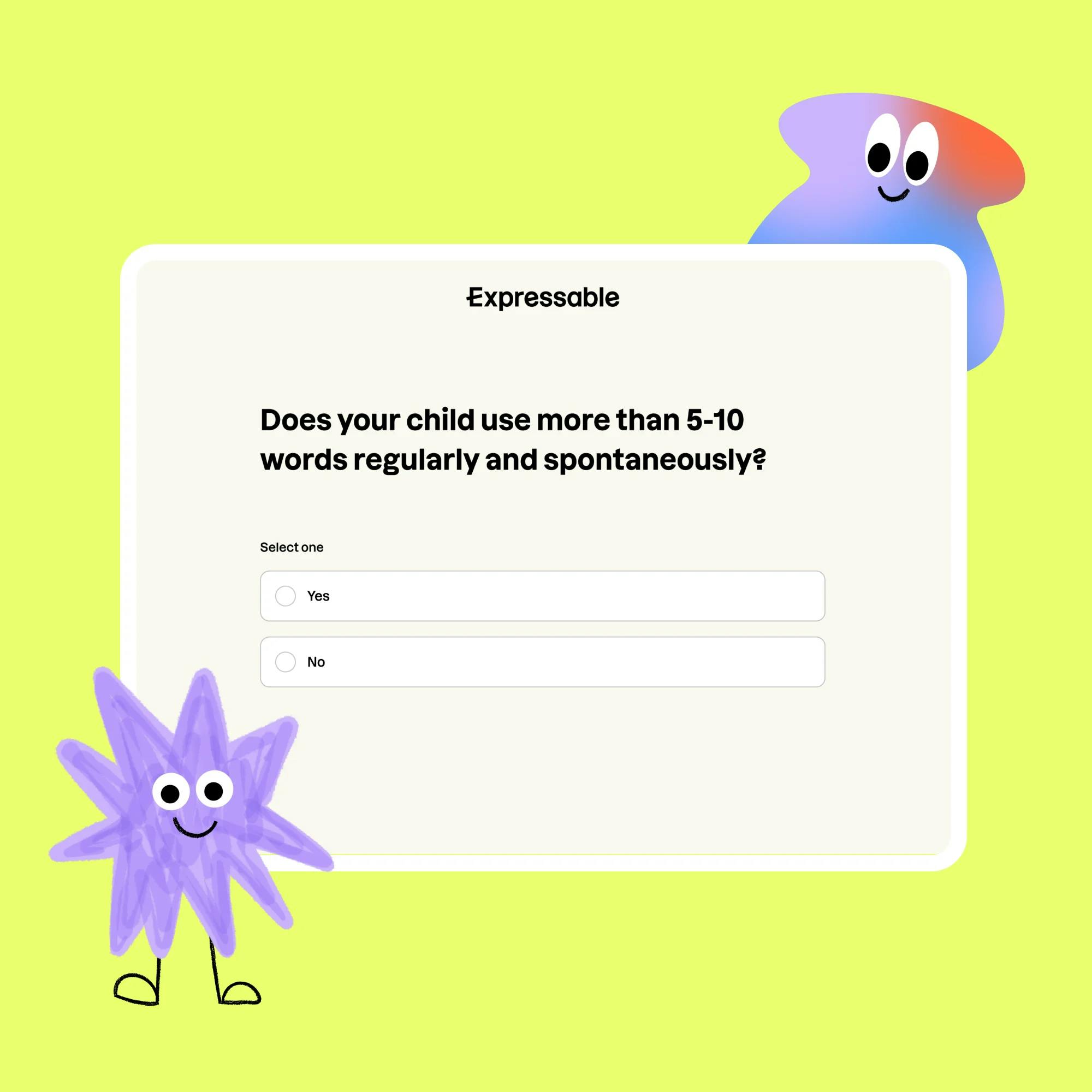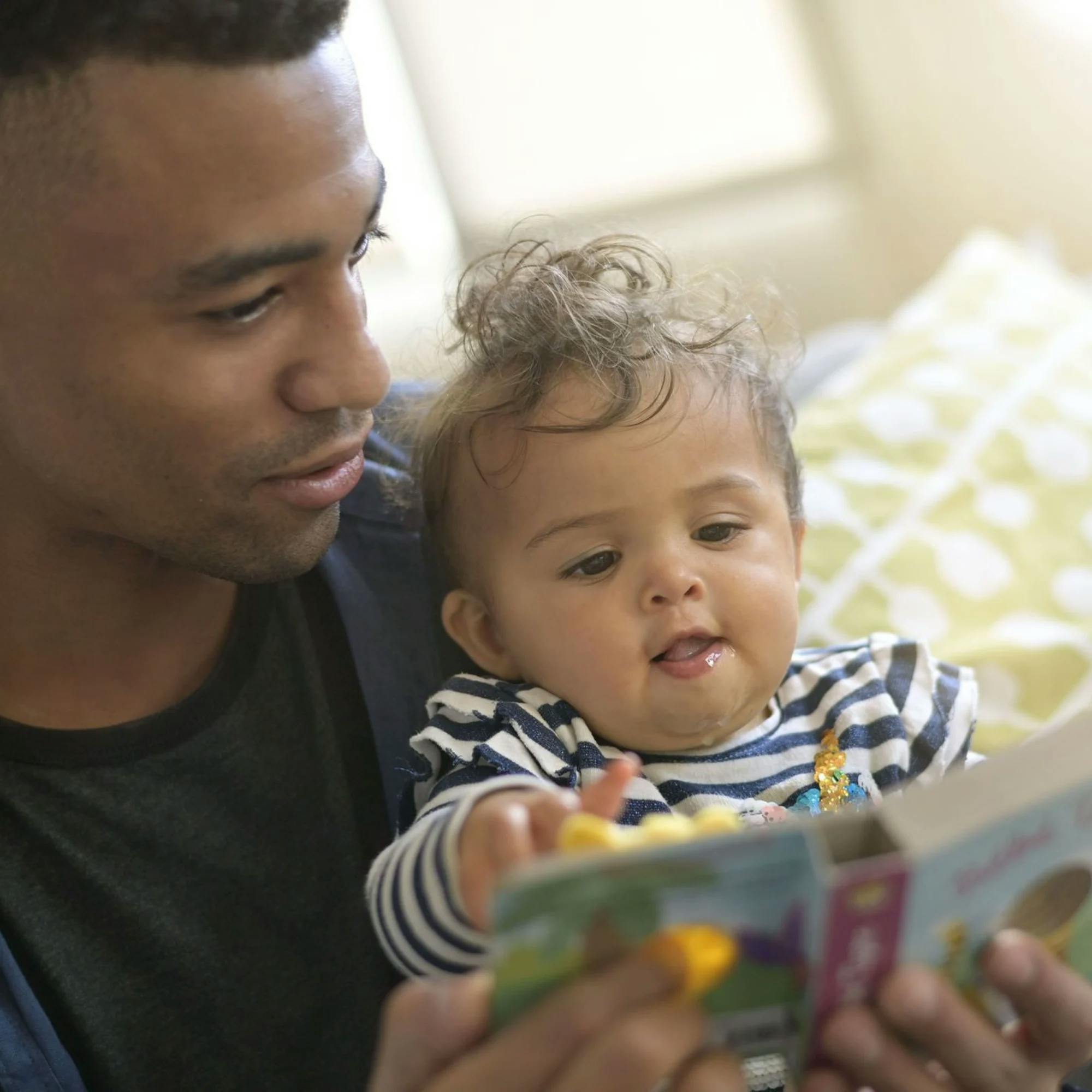When toddlers first start talking, there’s nothing quite like it. Those sweet little voices, coupled with a mispronunciation or two... who doesn’t love to hear “I wuv you?”
For many 2-year-olds and 3-year-olds, their speech will be difficult to understand, at least for a short time. Other children’s speech may be hard to understand for a longer period of time. Unclear speech and mispronounced words can be a normal part of development, but it also could be a sign of a speech sound delay. So it’s helpful to understand the signs of a speech problem in your toddler and when a speech evaluation may be needed.


Why is it so hard to understand a toddler’s speech?
Babies first start practicing speech by making cooing and babbling sounds. Over time, their babbles get closer and closer to real words. For example, you may hear your child say “bababa.” Next, they start assigning words to objects. So their ability to make the “bababa” sound eventually helps them know how to form the word “ball.” Or maybe “dadada” helps them to learn how to form the word “dog.”
There’s something to know about word formulation: At the start, your child’s words may not contain all the right sounds. The word “ball” may first be “ba,” or “dog” may sound like “da.” In the toddler stage, children are still learning to put consonants and vowels together in different combinations. Their words may just be a consonant-vowel combination (“da”) before becoming a consonant-vowel-consonant word (“dog”).
Toddlers are still learning to put consonants and vowels together in different combinations.
Children may also leave syllables out of words, or mix speech sounds up. All of these things can make a 2-year-old’s or 3-year-old’s speech hard to understand.
To top it off, when a child starts stringing words together to make phrases and sentences, it can be even tougher to understand what they say. You may find that it’s easier to understand your child when they give you one-word answers.


What is normal speech sound development?
It’s normal for some of your toddler’s speech to be unclear. But it’s important to look at:
How severe the speech errors are
How long the speech errors last
So, let’s discuss speech norms for typically developing children. In the past, experts stated that 50% of a child’s speech should be understood by age 2, 75% by age 3, and 90% by age 4. That remains a fair marker for familiar listeners–people like family members who hear a child’s speech every day. But what about unfamiliar listeners, who don’t often interact with your child–say, their pediatrician or a distant relative? New studies have led to updated speech norms that consider how well your child is understood by people who don’t know them well.
Ideally, we want anyone to understand at least 50% of what a child says by the time they’re 4 years old.
By age 5, we’d look for them to be 75% understood.
By age 7, they should be 90% understood by anyone they speak to.
When do toddlers learn how to make certain speech sounds?
It’s also helpful to know when the specific sounds used in American English typically develop. Usually sounds like /p/, /b/, and /d/ are first to develop, with /r/ and TH coming later. By age 5, most children can produce almost all types of speech sounds.
Here, you can see which sounds typically develop at each age:
2 years: /p/
3 years: /b/, /d/, /m/, /n/, /h/, /w/, /t/, /k/, /g/, /f/, /y/, /ng/
4 years: /v/, /s/, /z/, /j/, /l/, SH, CH
5 years: voiced TH (this), ZH (garage), and /r/
6 years: voiceless TH (thanks)
The reason speech sounds tend to develop in a certain order is because some sounds are much easier to make, so we master them sooner! Try it: A /p/ simply requires you to make a quiet popping sound with your lips. Now try the /r/ sound. It requires intricate tongue and jaw movement and tension to say correctly.
How do you know if your toddler needs speech therapy?
If your child is unable to produce the following sounds in words by age 3, they should be seen by a speech therapist to assess for a speech delay: /m/, /n/, /h/, /w/, /p/, /b/, /t/, /d/, /k/, /g/, /f/.
In addition, toddlers who show a lot of frustration trying to communicate, or who are very hard to understand, should be seen by a speech therapist as early as possible. Early treatment is best when it comes to speech and language delays. When you teach a 2-year-old or a 3-year-old the correct way to form sounds and words, they can learn these new motor patterns quickly. That’s because they’ve been using the incorrect pronunciation for a shorter period of time than, say, a kindergartener would have.
Early treatment is also important from a safety perspective. If a child is ever in an emergency situation, we want them to be able to communicate any necessary information clearly.


How to find a speech therapist for your toddler
There are a few steps to take if you’d like your child to receive a speech evaluation.
First, talk with your child’s doctor. Tell them about your concerns. They can help you decide if speech therapy is necessary. But remember: Listen to your gut. If your pediatrician tells you to wait and see, but you feel something is off in your child’s development, don’t wait. Ask for a referral for speech therapy, or seek a second opinion.
Your child’s pediatrician will likely have a list of speech therapists they recommend. You can also do your own research to find a speech therapist. Search online, talk to friends, or speak with your insurance company. Be sure to look for a therapist who’s experienced in working with young children.


Once you find a speech therapist, go ahead and get on the schedule. There may be a wait list, so keep that in mind. That’s another reason it’s best not to wait too long to get speech therapy started!
The first appointment with your speech therapist will be an evaluation. The therapist will do some tests to assess your child’s speech and language abilities and how they talk.
Be prepared to provide information about your child’s medical and developmental history. This is often completed by filling out a form. Your speech therapist will take everything into account in evaluating your child’s speech development.
After the evaluation, the speech therapist will determine if therapy is needed and if so, how often. Most children receive speech therapy once or twice a week.


The speech therapist will then create a treatment plan with goals for your child. They will consider which sounds your child is likely to have success with and which ones would help them speak more clearly. Therapy will focus on teaching your child how to make the correct sound, then work toward using it in words and, eventually, sentences.
Your speech therapist will also give you things to practice at home. Make sure to follow through with this! It will help your child make faster progress faster and reinforce what they’re learning in therapy sessions.


So in answer to our main question, “Is it normal that people can’t understand my toddler’s speech?,” the answer, most of the time, is “Yes.” Unclear speech is a normal part of childhood development. But you can use the information in this article to monitor your child’s speech and notice which sounds are hard for them to pronounce, especially as they approach 3 years old.
It may feel a bit intimidating to make these calls, but know that you are never alone. You can always reach out to a speech therapist for guidance. They are more than happy to help!

 Abby Barnes, M.S., CCC-SLP
Abby Barnes, M.S., CCC-SLP











